




|
Home |
|
Classes |
|
Syllabus / Styles |
|
Biography |
|
Poetry |
|
Photos |
|
Articles |
|
Labyrinths |
|
Storytelling |
|
Artwork |
|
Respects Due |
|
Contact |
|
Links |


|
...with a spirit of self-exploration |

|
Pennine Tai Chi |



|
The Labyrinth Tradition |
|
The labyrinth has appeared in numerous different cultures at different points in time. Ancient examples have been found in locations such as: Iceland, Scandinavia, Crete, Egypt, India, Peru and Arizona. In the previous issue we looked at similarities and differences between labyrinths and mazes and also considered some of their associated symbolism. On a practical level, a labyrinth can be defined as being unicursal, i.e. it has a single path without dead ends or false branches. Consequently, it will guide us through its whole pathway once, to arrive at the centre or goal. The only choice is whether or not we follow the path. In contrast, a maze is multicursal. This means that it may have many routes both true and false. Consequently, there will be decision points, dead ends and a degree of uncertainty. In this issue we will look specifically at labyrinths: how they developed and how to construct a simple ‘3-Circuit Labyrinth’.
Types of LabyrinthWithin the unicursal labyrinth tradition there are two main designs. ‘Classical Labyrinth’, sometimes referred to as a ‘Cretan Labyrinth’, due to early examples being found on Crete. The earliest example found of this design is on a rock carving in Sardinia dated at 1600 BC. ‘Medieval Labyrinth’, sometimes referred to as a ‘Christian Labyrinth’, due to it being developed within this tradition. The most famous example of this design is at Chartres Cathedral in France constructed around 1200 AD. Hence, the pagan classical labyrinth was adopted and adapted by the Christian church and has evolved into a sophisticated mandala type design that is full of symbolism and meaning.
Development of Labyrinth DesignThe precursor of the labyrinth was probably the spiral designs drawn and carved by early man. These designs have been found at ancient sites and hint at the idea of a vortex that maybe takes us, or the shaman to a different plane of being. |
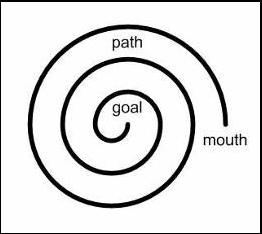
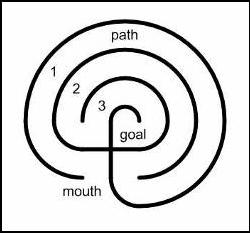
|
Spiral |
|
Classical 3 Circuit Labyrinth |
|
Similarly, there is a clear connection between such designs as the Greek ‘Meander’ or ‘Key’ Patterns and the labyrinth. |
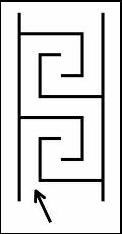
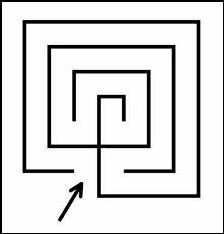
|
Greek Meander or Key Pattern |
|
Classical 3 Circuit Labyrinth (with straight lines) |
How to Construct a LabyrinthWhen we enter onto the path of a labyrinth, we are partaking in an ancient ritual. To learn its method of construction gives an even deeper appreciation of the principles inherent in its design. The following six-stage method will show you how to draw a Classical 3-Circuit Labyrinth. A similar method is used to construct the more common 7-Circuit Labyrinth (see previous issue for picture). |
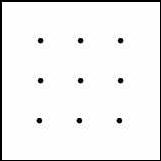

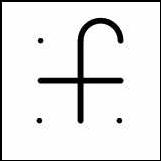


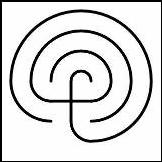
|
9 dot grid |
|
Central cross |
|
Enclosing the goal |
|
Inner path |
|
Middle path |
|
Outer path |
|
It is easy to imagine how the design for a classical labyrinth may have been stumbled upon by accident. However, the medieval labyrinth is clearly a construct of the sophisticated and developed mind. |
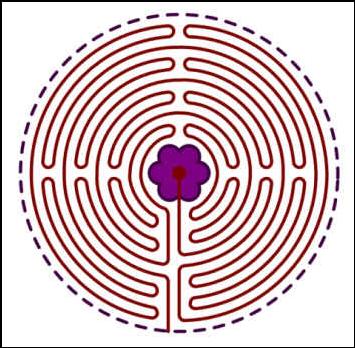
|
Medieval Labyrinth |
|
The most famous example of this design is at Chartres Cathedral in France. It is inlaid in the paving, having a diameter of a fraction under 13 metres and is the width of the nave. There has been much research into the sacred geometry of the master masons that built the cathedral. One notable correspondence is that it is the same size as the West Rose window. Also, the distance from the centre of the labyrinth to the west portal is virtually the same as the distance from the floor to the centre of the rose. This means that an imaginary line drawn from the centre of the labyrinth to the centre of the rose window would form the hypotenuse of an isosceles triangle. In such a configuration, the window connects with the heavens; the labyrinth with the underworld and humanity is in the centre. The cathedral is open on most days although the nave is usually covered with chairs except on one day per week when they are removed to make walking the labyrinth possible. Several French Cathedrals had similar labyrinths removed in earlier centuries due to noisy children playing on them and causing a disturbance during services! Happily some of these have since been reinstated. |
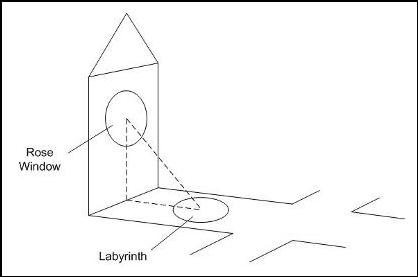
|
Labyrinths probably gave birth to the children’s game of hopscotch. In Germany, its name means ‘heaven hopping’. In some countries children write ‘Heaven’ at the top and ‘Hell’ at the bottom and aim to avoid standing on the lines. What is more, the shape of the game area often reproduces the form of a church.
SummaryThe labyrinth both creates and protects the centre. Entry is seen as initiation, a step on the path of knowledge that is both concealed and revealed by the labyrinth. Mazes and labyrinths have the ability to bring forth a wide spectrum of feelings and emotions and be used for a whole range of purposes. Sometimes they may make us feel claustrophobic, sometimes contemplative; sometimes engendering frustration, sometimes fascination; sometimes bringing amusement, sometimes amazement! The current resurgence of interest in labyrinths and mazes, whether they are ones built for sacred or for secular purposes (or whether they be computer games), is merely the latest stage in a long and winding history that goes back at least 3,500 years. Chances are, if we are still around in another 3,500 years then they will be also.
John BolwellFor many years, John has had a keen interest in reading, researching, drawing, building and visiting labyrinths. He can be contacted by email: spiralmyth@lineone.net
Bibliography The Mystic Spiral by Jill Purce The Enigma of the Labyrinth by Notre-Dame de Chartres
Labyrinthos is a UK organisation for the study of mazes and labyrinths that publishes an annual journal called Caerdroia. Their website is: www.labyrinthos.net
|